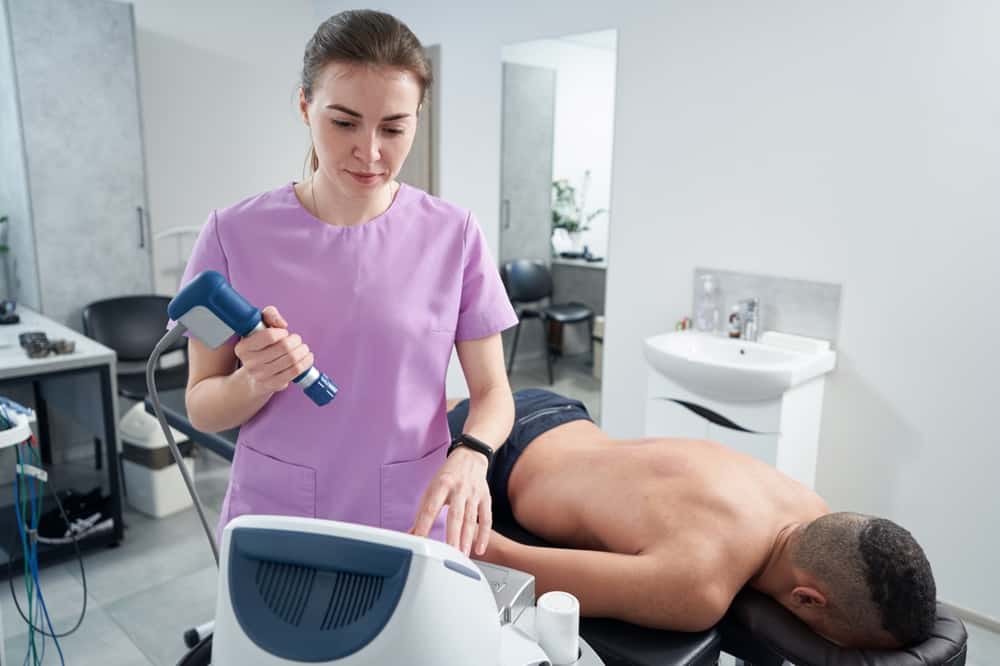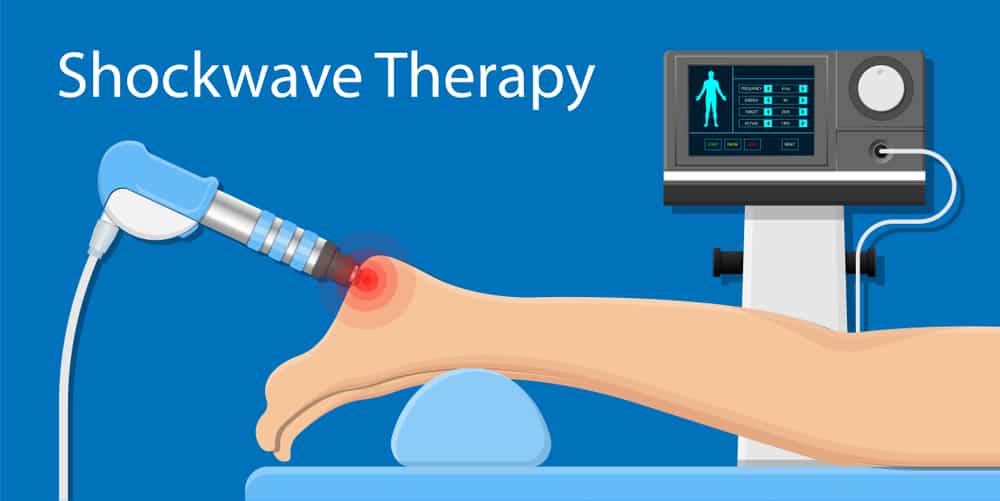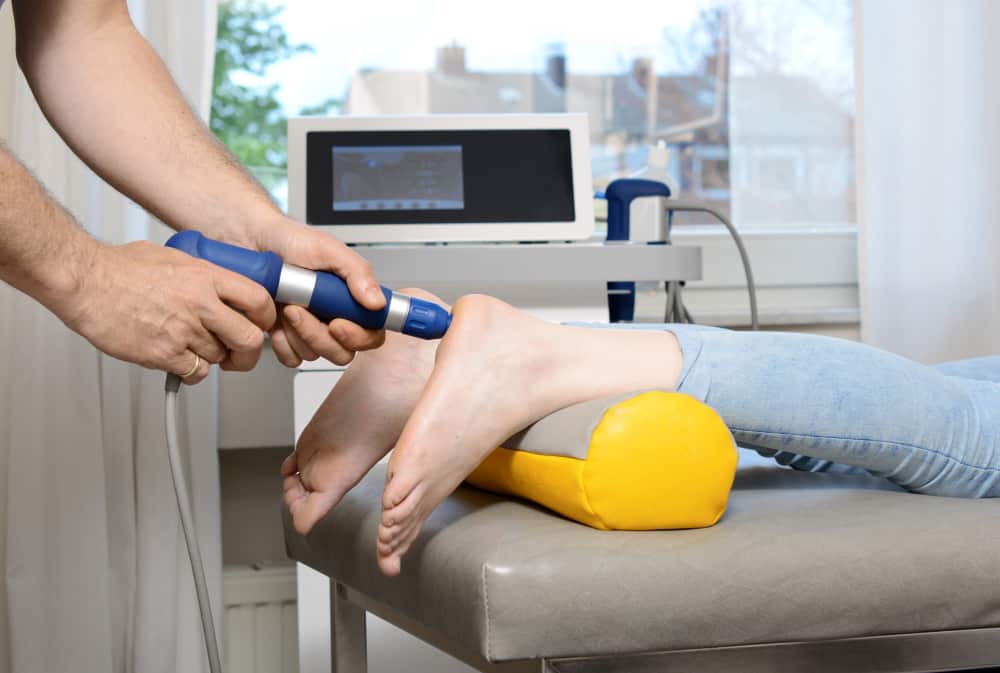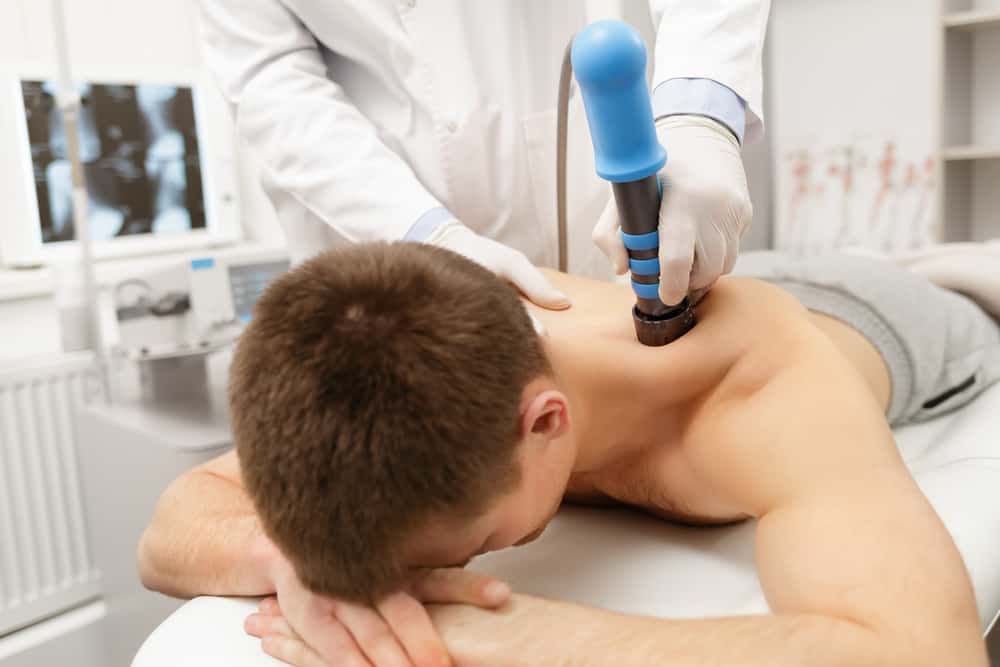SHOCKWAVE THERAPY
Introduction
If you are one of those people who have been experiencing some stubborn pain and don’t know how to get rid of it? If you are scared to go to a physiotherapist out of the fear that they might suggest some very painful procedure or surgery for your painful arm, leg, hip joint or back? Or are you too old to think of anything, who needs an instant relief from pain but can’t go for any major procedure?
If you are experiencing all that we have mentioned, you don’t need to be bothered anymore. We have got you the perfect solution in the form of Shockwave therapy or Extracorporeal Shockwave Therapy(ESWT). Shockwave therapy is one of the best non surgical therapy that will help you get rid of your pain in a nutshell. It will instantly relieve your pain and restore your function in the target site very easily.
It is an Ideal therapy for anyone looking forward to instant pain relief and someone with gastric issues due to administering a lot of pain killers. It acts as the first line of defense against acute or chronic pain.
You can also check our success with different patients when it comes to shockwave therapy. We have the most satisfied patients.
What is shockwave therapy?
Before getting into the debate of whether or not shockwave therapy is recommended for you or not, you should actually know what is shockwave therapy?
Extracorporeal means outside of the body and shockwaves are the type of waves that are directed at the target site. It is an innovative, non surgical and cost effective treatment that works by delivering impulses of energy, targeted to specific damaged tissues within the abnormal tendon. Shockwave therapy is very effective with tendon pain or tendonitis.
The most common benefits of Shockwave therapy are:
- Instant pain relief.
- Restoring the previous function.
It is also known as Radial Shockwave Therapy (RSWT). Its most common application in treating painful tendons is already established but its role in the recent cure of muscles and joints is, however, a recent discovery. The therapy was originally invented in the 1990s, to treat kidney stones, non invasively.
Now, it has provided its helping hand to physiotherapists to treat many musculoskeletal conditions such as heel pain caused by plantar fasciitis, tennis elbow and Achilles tendinopathy.
Shockwave therapy is the go to therapy for every person suffering from pain related to any muscle, joint or tendon because :
- It treats your pain without an incision on your body.
- It has no side effects.
- It provides instant pain relief.
- The procedure itself is not painful, everything goes so smoothly.
- It is approved by the National Institute for Health and Clinical Excellence.
How does shockwave work?

Shockwave Therapy
The mechanism of action of shockwave therapy is not really complex. It uses a specialist device that delivers audible, low energy sound waves to the injured parts of the body, which increases the blood flow to the target site. It is a mechanical process and not electrical that is to say these are not electrical waves.
Shock Wave Therapy Steps:
Wherever you go for shockwave therapy treatment;
-
- They will first try to locate where you are experiencing the pain then mark it.
- They will then apply ultrasound gel to the skin to help the sound waves pass through your skin.
- They will then finally use a hand held device attached to a machine that transforms compressed air into energy in the form of sound waves. It will be directed unto your skin with light pressure. The waves are in the form of radial waves.
- These are felt in the form of pulses which can be slightly uncomfortable but not painful.
- The process does not require any sort of anaesthesia or sedation.
- Your first treatment will include slightly low intensity shock waves and then raise to a point where you feel comfortable slowly and gradually.
- Shockwave therapy treatments are performed at weekly intervals. Each session takes around 20 minutes, you may need 3 sessions over 3 consecutive weeks.
There are 2 modes of action on the basis of which it helps relieve pain:
- The shockwaves first operate to desensitise nerve endings, which frequently results in an immediate pain decrease.
- Secondly, the shockwaves create regulated microtrauma (microscopic tissue injury), prompting the body to respond by increasing blood circulation and metabolism in the afflicted area. The body’s innate healing reaction will be activated and accelerated as a result of this.
The scar tissues contributes to one’s pain but thanks to shockwave therapy you can also combat that by breaking them down.
Managing pain with shockwave therapy
Whenever there is any sort of problem with bone, muscles or tendons resulting from any sports injury or due to lifting heavy weights, it makes it hard for you to move around and stay active. It is really painful to do what you have been doing all your life, that is to move. You are unable to do anything or even enjoy your life because of the villain named Pain in your story.
You will rely on painkillers that will help you mobilize and stay active. They work temporarily and so you have to return to it each time you feel uneasy, in pain. Besides, taking frequent painkillers have side effects like it can earn you gastric issues that will interfere with your digestion. Surgery is also not a good option because it is too painful a procedure and still you are not so sure if it will work or not.
In this case, the only way where you can manage pain is by using shockwave therapy treatment, which is non-invasive and innovative treatment that provides you with complete comfort and relief from unending pain. Things become much easier for people who don’t look up much to surgery as an option for pain relief.
We also perform this procedure with huge success frequency among our patients with complaints of pain. It is performed under our very trained physiotherapist command, who is highly skilled in this specific field.
What conditions shockwave therapy treat
Conditions
Shockwave therapy is useful treating the following conditions in people:
- Calcific tendinopathy
- Tennis elbow (common extensor tendinopathy)
- Golfer’s elbow (common flexor tendinopathy)
- Greater trochanteric pain syndrome (also referred to as gluteus medius tendinopathy and/or trochanteric bursitis)
- Insertional pain
- Proximal Hamstring Tendinopathy (also referred to as high hamstring tendinopathy, or hamstring origin tendinopathy)
- Patella tendinopathy
- Jumper’s Knee
- Heel spur
- Insertional Achilles tendinopathy
- Mid-portion Achilles tendinopathy
- Plantar fasciitis
- Medial tibial stress syndrome
- Shoulder pain
Before shockwave therapy is considered you will have a full clinical assessment which may include an MRI or ultrasound scan.
Is shockwave therapy suitable for everyone?
The first step to check your suitability for the therapy is where your physiotherapist will take your history. Shockwave therapy is safe and very effective but then it is not necessary what one body accepts and is comfortable with, the other will experience the same. There are certain conditions where it is not advised. These are given below:
- Blood clotting disorder and/or if using any blood thinning or anticoagulant medications such as aspirin (75mg on a daily basis) or warfarin
- Nerve disorder
- Bone cancer
- An infection in the area that needs treatment
- Metal pins or plates in the area that needs treatment
- Has had a Cortico-Steroid injection in the area in past 3 months
- Malignancy is known to be present in or near the treatment area
- If taken any non-steroidal anti-inflammatory painkillers such as ibuprofen for any reason in the last two weeks
- Lung tissue in direction of sound fields
- Presence of a Cardiac pacemaker
- Over or near bone growth centers until bone growth is complete
- Over ischemic tissues in individuals with vascular disease
- Treatment site has open wounds, skin rashes, swollen, inflamed, or infected areas
- History of latex allergy or allergy to coupling solution
These can be further divided into two groups i.e absolute contraindications and relative contraindications.
Is shockwave therapy painful?
It is not completely comfortable. You might feel a little discomfort during the session but not pain. Mostly it feels like strong impulses against your skin. It can have a bit of a tingling sensation.
However, the shockwaves are used in a way by the trained physiotherapist to not cause any pain. They slowly adjust it to your body by starting off with lesser intensity. Usually, it is directed for less than 5 minutes, so the patients can bear it for that interval.
After shockwave therapy:
How long does it take to recover after shockwave therapy?
After you’re done with your treatment you will be allowed immediately to go home and return to what you used to do. However, for the first 48 hours you should take strict bed rest for the treatment to work. Avoid any heavy impact cardio or running or playing any outdoor games. Shockwave therapy recovery time is less than 2 to 3 days and one should fully take rest at this time.
If you’re in pain, take paracetamol if you can, but don’t take a non-steroidal anti-inflammatory pain reliever like ibuprofen because it will negate the treatment and render it useless.
Many patients experience an improvement in symptoms almost immediately while others take several weeks to respond. Swelling and redness in the treated area may occur in the days following shockwave therapy. This may aggravate your pain, but it is a typical part of the healing process and will pass in a day or two.
It is advised to see your general physician or physiotherapist every 6 to 8 weeks for your overall assessment.
Evidence for Shockwave technology
There is enough evidence from the big names of the world that approves shockwave therapy treatment as being useful in treating several conditions.
The National Institute for Health and Care Excellence recommends shockwave therapy for tendon problems (NICE). The National Institute for Health and Care Excellence (NICE) provides national guidance and advice to improve health and social care in both the NHS and private practice. It offers evidence-based suggestions to help healthcare professionals make the best decisions. The National Institute for Health and Care Excellence (NICE) has published guidelines for the use of shockwave therapy in the treatment of Achilles tendinopathy, plantar fasciitis, and calcific tendinopathy.
Safety Instructions
However, we have evidence to ensure your safety regarding shockwave therapy and we can pledge by it but it is necessary to visit a skilled person who is trained in this specific field. Besides, you should visit a passionate clinician who has experience in treating tendon pain.
If you are looking forward to one such clinician, then you should visit us, for you will not be disappointed. Trust me you will be making a great choice by choosing and trusting our trained and professional physiotherapist.
How can you book an appointment?
We aim to see you within 24 hours so contact us to make an appointment or to find out more information on how we can help you, please call us on 07515280990 or email us primephysiocareluton@gmail.com. We are one of the best clinics whose physios are registered with HCPC, CSP and Physio first as well have enormous experience.
NOTE: Prime Physio Care soon will be equipped with latest shockwave technology.
Most common question:
How long does Shock Wave therapy take to work?
It is different from person to person, depending on the health conditions and age of an individual. But overall it takes around 6 to 8 weeks after treatment to feel the significant decrease in the amount of pain you are experiencing. Some might be benefitted earlier than others.
Is shockwave therapy safe?
Yes, it is safe. Besides, there is no such thing as shockwave therapy side effects. There can be no other safe method that is non-invasive in treating pain than shockwave therapy itself.
Do you have to rest after shockwave therapy?
Yes, rest is the foremost thing when it comes to any procedure. It is important to not stress that area for 24 hours, that has undergone shockwave therapy.
What can I expect after shockwave therapy?
After your shockwave therapy you will feel as normal as you used to be before the pain struck you in that specific part of your body. The pain is not there simply for some entirely or is lesser than what it used to be.
You might feel temporary soreness or tenderness in target area due to the effect of the therapy itself but it is not much to worry about. It may go away after a day or two.
What is the success rate of shockwave therapy?
Extracorporeal Shock Wave Therapy (ESWT) is currently generating a lot of buzz, and researchers are trying to figure out how it works in tendon disorders. The success rate ranges from 60% to 80% in epicondylitis, plantar fasciitis, cuff tendinitis, trocanteritis, Achilles tendonitis or jumper’s knee.
What is the cost on average for shockwave therapy?
Shockwave therapy usually consists of six distinct procedures, although as additional research becomes available, treatment procedures may alter. Each therapy costs between $400 and $500 out of pocket. In London, at complete most conditions are successfully treated with 3 sessions of shockwave therapy. The cost is $114 per session.



